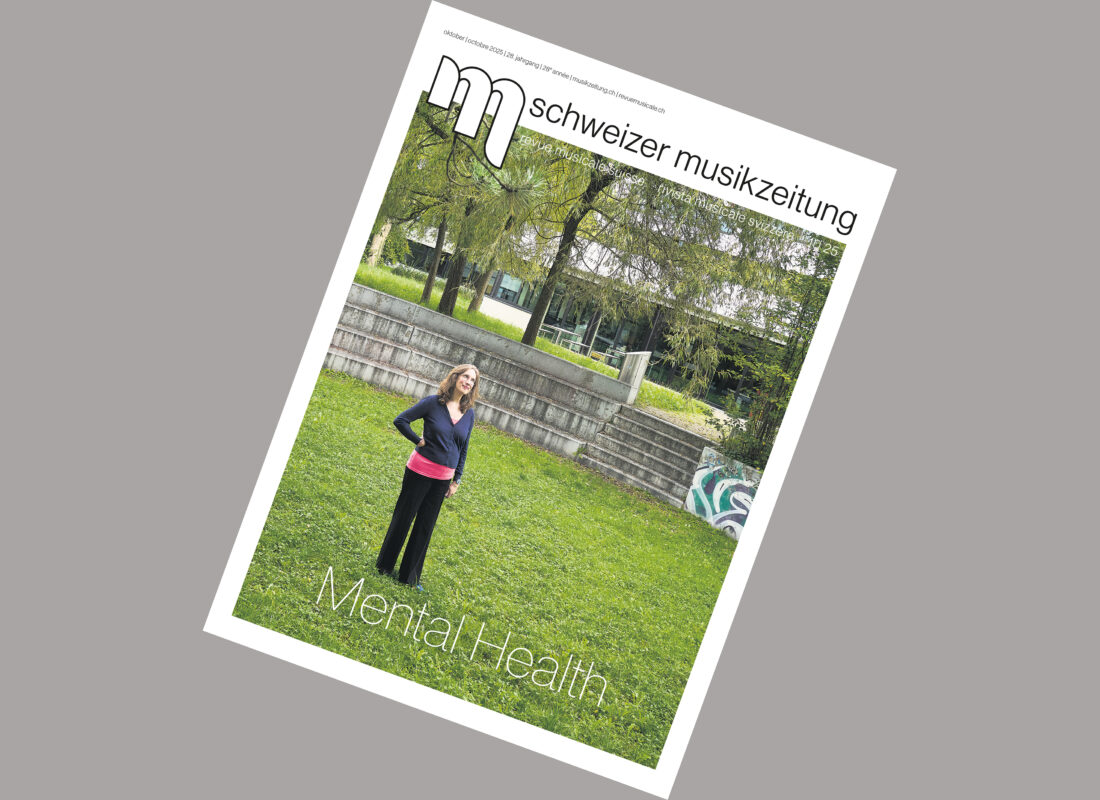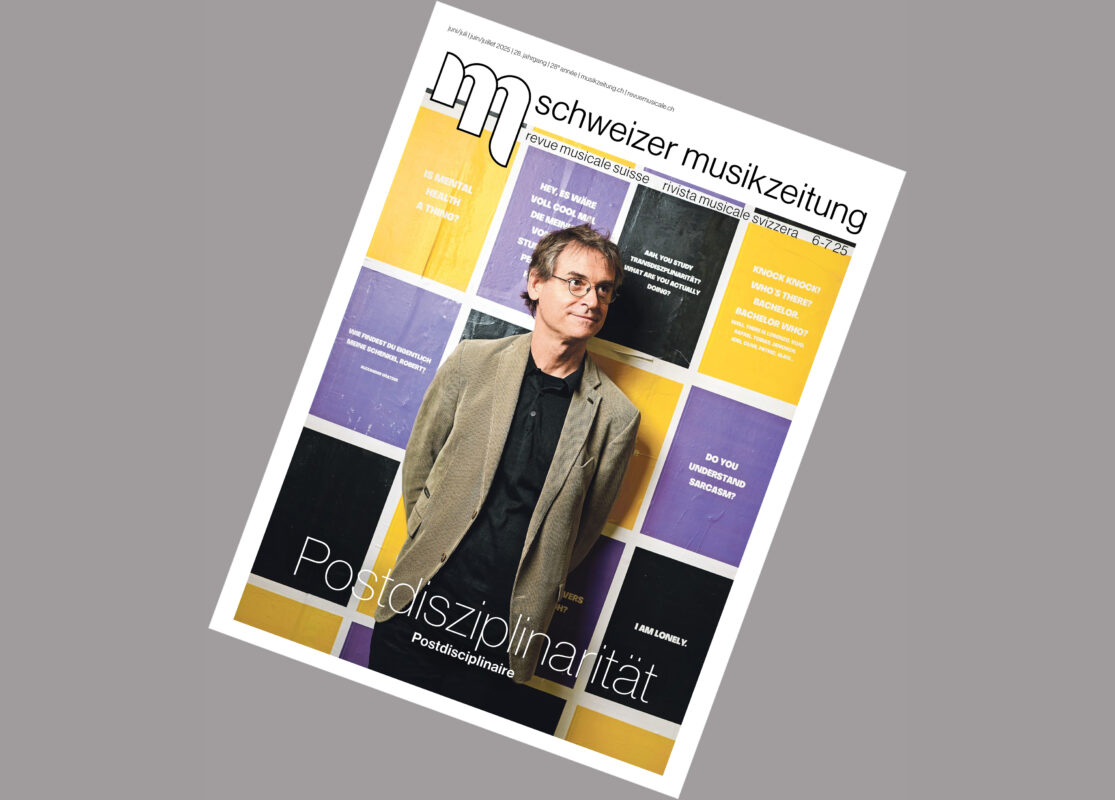Come on, dance!
What do we actually hear with our inner ear all day long? Can this sound be shaped?

Someone has dropped a bucket of paint. Traces of bicycle tires, footprints, lines, arcs and rhythms in white on the large square. This accident of color shows the image of many past movements. As I look at these white traces and trace them with my eyes and in my thoughts, a quote comes to mind: "All perception of noise in art has the form of a dance, however motionless we may perform it."(1)
I like this sentence and I think something about it feels true. However, something about it has always bothered me. At this moment, I'm particularly fascinated by the contrast: motionless - dance / silent - music. Also because I've been wondering for a long time how it actually works to hear music inside your head, even though there's silence outside your ears.
During a soundwalk with Hildegard Westerkamp, I realized for the first time that there is such a thing as an inner world of sound. The Canadian composer used the term when she prepared us for the fact that we would not be able to turn off our thoughts during the tour. They would always be audible inside us, no matter how much we concentrated on the sounds outside. So I was prepared for this and didn't let it bother me as we walked silently through Darmstadt's pedestrian zone. Together we listened to the metal gully rattling under our feet, the midday bells from the church tower mingling with the sound of engines and the fuzzy, indistinct sound of the bicycle bell in the echo of the underpass. But then the noise of the advertising messages caught me off guard. STOP! SUPER CHEAP! ONLY €3.99!", I rumbled, even though nobody said a word. Images and slogans, signs and fonts were all jamming into me. Where there is writing, I realized, there can be no silence for those who can read it.
Then I began to observe the hustle and bustle and play in my inner world of sound and to wonder about it. Does everyone actually hear their own voice in their inner ear when they read, I asked myself? Or are there other voices too? And if so, where do they come from? Can they be shaped? Can you hear what I hear inside, even if there is silence outside?
One composer who works with the sound of inner voices is the Lithuanian Ignas Krunglevicius. In his performance Deviance (2011), a conversation between three parties is projected in written form onto three screens: an interrogation, a therapy session, a clarifying conversation between a judge or therapist, a pair of parents and a psychopath who has committed brutal murders. The appearance of the words is accompanied by percussive signals from eight musicians. The characters emerge on their own in the silence in between: three voices. Capital letters provide more volume inside, an exchange of blows ensues. And there, a gender twist! The whole time I thought the brutal, perverse killer was a man. But no, it must be a girl! And the voice I had imagined changes, briefly remaining in a strange slanting position, half man, half woman, before tilting in one direction: There! The girl!
It is not really surprising that letters have an effect on the inner world of sound. After all, they were invented to symbolize sounds. What is more puzzling is that the deciphering of these symbols has sunk into us so quietly. As Alberto Manguel explains in his book A history of reading describes, reading was originally a noisy activity: "Since the first Sumerian clay tablets, written words were intended to be spoken aloud: Each written character carried within it a certain sound - like a soul. [...] Confronted with a written word, the reader must recognize the silent letter, the scriptaand give them a voice [...] in verbainto spoken words."(2) The mumbling and chatter that used to be heard everywhere when someone was reading is now mostly carried around inside.
The Irish composer Jennifer Walshe demonstrates a great sensitivity for the inner world of sound in her works. However, she evokes the inner sounds not with the help of letters, but through the use of video. In Violetta Mahon's Dream Diaries 1988-2008 four video images are shown next to and on top of each other. They show the melting of a chocolate bunny. How pastel-colored sweets with love motifs are put down and taken away again. How a battery-operated stuffed bunny drums. Sometimes there are only two pictures. Sometimes one on top of the other, sometimes crossed. The parallel movements create something like polyphony, but without a single voice being heard. Walshe sees video as an essential component of her compositions: "The video is never a seperate element that somebody else composes, its something that I compose."(3)
But what happens in the inner world when you watch these videos? Can I really call it sound? Is it not rather a feeling for rhythm, for motifs, for lines and arcs ... Is it music - or is it rather - a dance?
I look at the white tracks on the road, and suddenly I know what bothers me about the quote. What's with the noise anyway? "All perception of art has the form of a dance, however motionless we may perform it." An inner, motionless dance, when reading texts, listening to music, looking at pictures and videos.
White footprints, bicycle tires. Lines and arcs. A dance in my inner world.
Notes
1 Martin Seel: Aesthetics of appearance, Suhrkamp, Frankfurt am Main, 2003
2 Alberto Manguel: A history of reading, Berlin Verlag Volk und Welt, 1998, p. 60
3 Jennifer Walshe in an interview with the author at the Darmstadt Summer Course, August 2012








